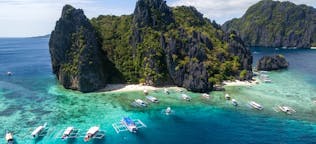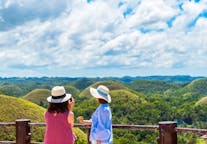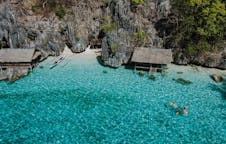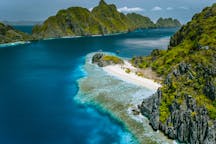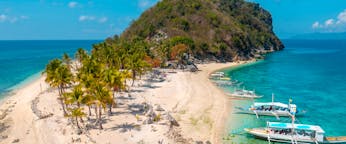Best places in the Philippines
Destinations
2,585 results match your search
Refine the results by using the filters
Popular

4.6
2,480 reviews
Puerto Princesa Subterranean River National Park, Puerto Princesa, Palawan, Philippines
Underground River
Puerto Princesa Underground River (PPUR) Located about 80 km north of Puerto Princesa in Palawan lies an underground river known as the Puerto Princesa Subterranean River National Park. More commonly known as the Puerto Princessa Underground River, it channels its way through caverns and flows d

4.8
689 reviews
Chocolate Hills, Loay Interior Road, Carmen, Bohol, Philippines
Chocolate Hills
The Chocolate Hills are a geological formation of as many as 1,776 conical hills in Bohol, spread over 50 sq km across the towns of Carmen, Batuan, and Sagbayan. The hills are covered in green grass that turns brown during the dry season of February to June, transforming them into rows of seemingly

5.0
114,436 reviews
Intramuros, Manila, Metro Manila, Philippines
Intramuros
Intramuros The walled city of Intramuros in the Philippine capital city of Manila was the seat of political power when the Philippines was a Spanish colony. Today it's one of the top Manila tourist spots. Protected by bastions, moats, cannons, and bulwarks, the wall encloses an area of about

4.9
155 reviews
Kayangan Lake, Coron, Palawan, Philippines
Kayangan Lake
Kayangan Lake Kayangan Lake in Palawan, is one of the most popular Coron tourist spots and is included in Coron island-hopping tours that depart from town on a regular basis. It is also one of the cleanest lakes in Asia. How to Get There Getting to Kayangan Lake itself involves quite a long t

Install the Philippines’ biggest travel app
Download the Philippines’ biggest travel marketplace to your phone to manage your entire trip in one place
Scan this QR code with your phone camera and press the link that appears to add the Philippines’ biggest travel marketplace into your pocket. Enter your phone number or email address to receive an SMS or email with the download link.


